
This is a story about a CEO of a multinational consumer goods organization and her lightbulb moment. Last night the CEO was sitting in a theatre listening to her young daughter play the violin in her school orchestra. The conductor, whilst trying his best, was unable to control all of the kids and as a result, the sound produced was out of sync and out of tune.
The CEO thinks, aside from how much money she has spent on violin lessons, about how even though the conductor is a professional that travels around the world conducting, even he was unable to make the children sound good. How is it you can have sheet music and a great conductor signally what to play and when, but still get something you wouldn’t even call a melody?
The following morning as she greets her coworkers on the way to her corner office, she realizes why they haven’t been reaching their goals for this quarter. They have hired the top talent but without the right strategy and alignment of teams, the whole business is out of tune.
Is it even possible to orchestrate the perfect strategy for growth?
Now, how did Tesla, Apple, Airbnb, Novartis, Toyota, Slack, Coca-Cola, Walmart, Amazon, and other industry leaders set up their strategies to become unstoppable on their way to the top?
And on that note, here‘s to well-orchestrated strategies!


Airbnb is one of the fastest-growing tech companies, shortly after their IPO in December 2020, they reached a US$100B+ valuation. They currently sit at a US$87.74B valuation. Airbnb has quite possibly changed the way we travel forever. But did you know that they started out about as low-tech as you can get?
The first Airbnb rental that ever took place was the renting out of 3 air mattresses on the floor of co-founders Brian and Joe’s apartment. They made $80 per guest. It seemed like a great idea for a startup, so they put up a website and started inviting other people to list their own mattresses for hire.
They had plenty of listings on the site and plenty of site traffic, but too few people were actually making bookings. They were frustrated about the lack of effort they perceived in the listings people were making. So they took matters into their own hands.
The co-founders grabbed their camera and went to knock on the doors of each and every one of their NYC listings. When someone answered the door, they would persuade the owner to let them in, and then take a ton of photographs of the inside. They touched up the photos a bit and uploaded them to the website in place of the old photos the owners had taken. Within a month of starting this strategy - sales doubled. Then tripled. Then....well, the rest is history.

Airbnb’s initial growth confounds one of the most commonly stated principles of building a tech startup, that you must make everything scalable. What Brian
& Joe did was anything but scalable. But it got them enough traction to prove that their concept could work. Later, they did find a way to make this solution scalable, by hiring young photographers in major locations and paying them to take professional photos of the owner’s listings (at no charge to the owner).
In more recent years we have seen Airbnb take off and hold somewhat steady during Covid.


In the year 1973, the ‘Big Three’ car makers in the USA had over 82% of the market share. Today they have less than 50%. The main reason for this is the aggressive (and unexpected) entry of Japanese car makers, led by Toyota into the US market in the 1970’s.
Cars are big, heavy, and expensive to move around. That’s one of the reasons why the US market was so surprised when Toyota started selling Japanese-made cars in the US, at prices far lower than they could match. The car industry was a huge contributor to the US economy, so one of the first reactions from the government was to implement protectionist taxes on all imports of cars, thus making Japanese cars as expensive as locally made cars.
But the tactic failed. Within a few years, Toyota (and by now others too) had managed to establish production plants on US soil, thus eliminating the need to pay any of the hefty new import taxes. At first, US car makers weren’t all that worried. Surely by having to move production
to the US, the production costs for the Japanese car makers would rise up to be roughly the same as those of the local car makers. But that didn’t happen. Toyota continued to produce cars (now made locally on US soil) for significantly cheaper than US companies could.
Their finely honed production processes were so efficient and lean that they were able to beat US car makers at their own game. You’ve probably heard of the notion of ‘continuous improvement’. In the world of manufacturing, Toyota is pretty much the grandfather of exactly this. Toyota holds the top position globally in production volume, as illustrated in the graph below.
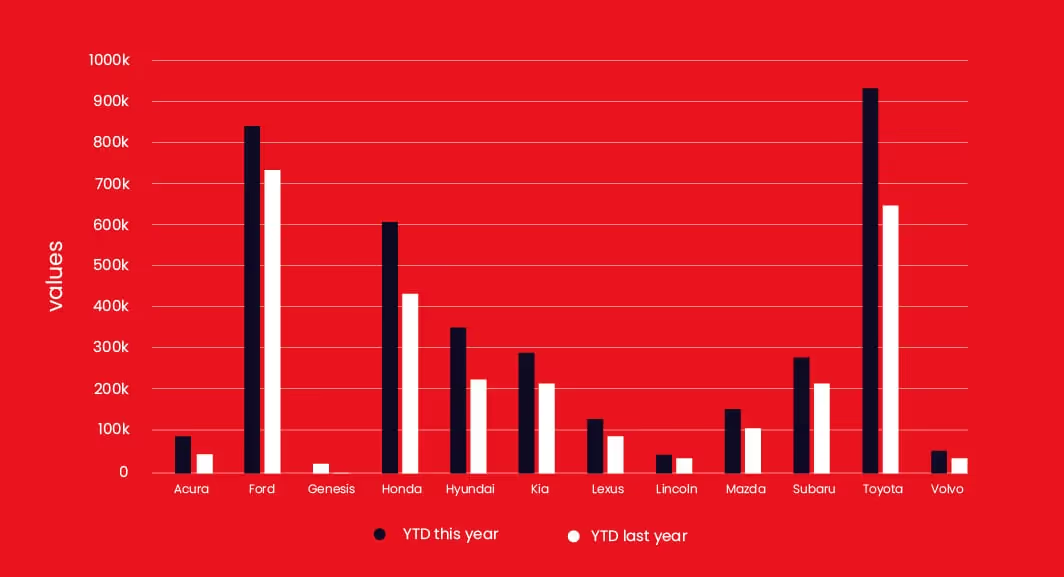
Most business success stories that you read, especially in the western world, involve bold moves and against- all-odds tales of bravery. Which is what makes this particular story so unique. Toyota spent years studying
the production lines of American car makers such as Ford. They knew that the US car industry was more advanced and more efficient than the Japanese one. So they waited. They studied their competitors and tried to copy what the Americans did so well. They blended these processes with the strengths of their own and came up with something even better.
Toyota proved that knowing its own weaknesses can be the key to success and be one of the best business strategies you can ever deploy. Not just that.
Can you name a single famous executive at Toyota? One of the reasons you can’t is that Toyota’s number one corporate value is humility.
Not even the most senior plant executives have named car spaces of their own. The humility that helped them to crack the US market runs deep in the organization, from the executives to the assembly workers.

HubSpot isn’t as famous as Airbnb or Toyota. But, with a US$22.14B valuation, they’re no slouch, and more impressively, they’ve achieved that valuation in an industry that didn’t even exist before they invented it themselves. That industry is known as ‘inbound marketing’.
Most of the marketing that we experience is known as ‘interruption’ marketing. This is where adverts are pushed out to you whether you like it or not. Think tv adverts, billboards, Google Adwords, etc.
In 2004, HubSpot created a software platform that aimed to turn this concept of marketing on its head. The HubSpot marketing platform helped companies to write blog posts, create eBooks, and share their content on social media.
The theory was that if you could produce enough good quality content to pull people to your website, then just enough of them might stick around to take a look at the product you’re actually selling (behind the blog).
They coined the term ‘inbound marketing’ - and long story short, they’re now one of the biggest SaaS companies in the world. But that’s not the interesting part of the story.
The interesting part of the story is this: HubSpot created a new type of marketing. They then used that type of marketing to market their own company, whose sole purpose was to sell a platform that created that new type of marketing.
In a nutshell, HubSpot had an idea for a cool new way of marketing. Most companies would have taken that new way of marketing, and applied it to something that they were already selling. But instead, the HubSpot guys decided to monetize the marketing strategy itself. They took a whole bunch of concepts that already existed (blogging, eBooks, etc) and packaged them into a ‘new way of doing things’. Not only that, but they created an awesome narrative, and then proved how powerful this new way of marketing could be, by building a US$22.14B business from it.
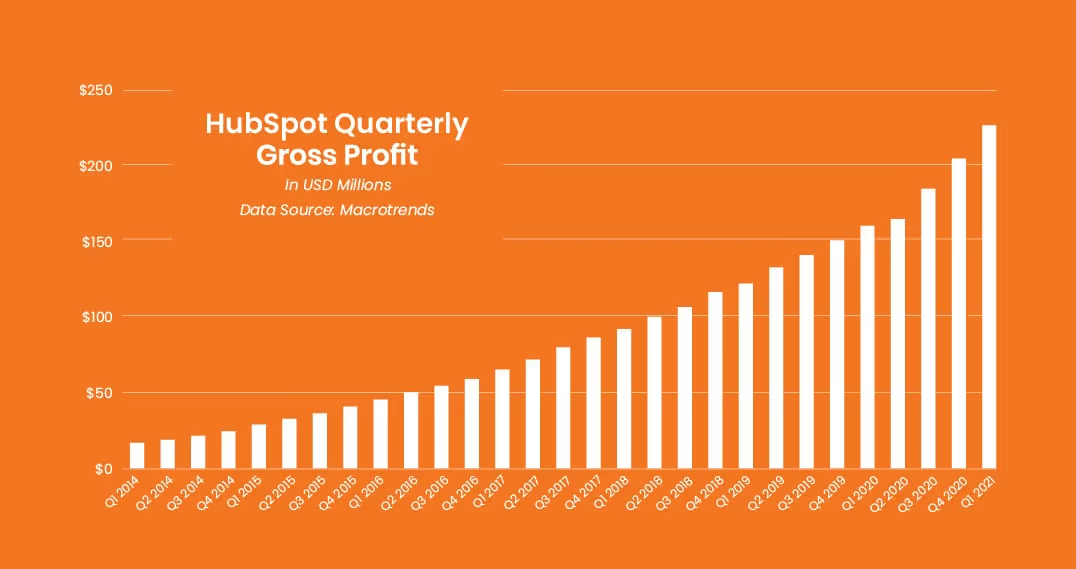

There are certain industries that you just don’t mess with. Industries like Aerospace, Supermarkets, and Banking. Actually, banking is probably the hardest industry of all to try to disrupt, because the barriers to entry are huge. You need mountains of capital, a ton of regulatory approval, and years of building trust with your customers around their most important asset - their cash.
Banks are old. Their business models are largely unchanged for hundreds of years, and they make huge amounts of profit, without actually making a single thing. They’re insanely powerful and almost impossible to displace. But for some crazy reason, PayPal didn’t seem to care.
Here’s why:
In a very small space of time, PayPal has managed to insert itself as a whole new method of payment on the internet (and offline) giving a very real alternative to your trusty debit or credit card. But how did it manage to do it? Let’s take a look at why PayPal had one of the best business strategies ever.

There are two huge pillars of success to PayPal’s story. The first, an unbreakable disruption mindset. They got a fairly lucky break when they accidentally became the favored payment provider for eBay transactions.
This was followed a few years later by their US$1.5B acquisition by eBay themselves. eBay was smart enough to mostly leave them alone, and their newfound sense of boldness saw them strike a series of deals with other online retailers to try and replicate the success they’d had with eBay.
This is where the second pillar of their success comes in, partnerships. Banks had always been wary about forming partnerships directly with retailers - instead they relied on their scheme partners (Visa / MasterCard) to do that for them. They didn’t want the hassle of managing so many different relationships and were extremely confident about the fact that credit and debit cards would always be at the heart of the financial payment system. But the problem was that MasterCard themselves were already working on a partnership with PayPal. Leaving the banks out in the cold. Today, PayPal commands an amazing 54% market share of the payment processing market. Almost all of that growth has come from their direct relationships with merchants large and small.

Companies can always draw inspiration from what their peers have done in successfully taking a product from ideation to market. One preliminary observation that will quickly become apparent from the discussion that follows is that the companies with the most successful products identified a central anchor of their GTM strategy and focused on this. Successfully launching a product is hard. As research from Nielsen indicates, roughly 80-85% of new products fail, and even for products that end up being successful, the margin between success and failure is paper-thin. What often makes the difference, as companies with the best performing products have come to find, is having a defined go-to-market strategy.
With a thoughtful and comprehensive go-to-market plan, companies are able to objectively examine their product-market fit and identify the best routes for pushing their product from new entrant to market staple. Overcoming the challenges when introducing a new product or service into the market can prove insurmountable. The good news is we can learn from other companies that faced similar obstacles and succeeded. Who are these companies? why did they succeed? and what was special about their go-to-market strategies? How has this produced a significant impact in terms of their results and market share in their industries today?

When Stewart Butterfield and his team hit upon the idea to share their revolutionary internal communications platform with the world, they knew they had something big. The problem for them, however, was how to translate the superior benefits of a convenient, always-available communication system to email-weary users. The solution? To strategically position themselves as the go-to for a simple, integrated, team communication tool that does away with confusing email threads. And so, “the email killer” was born. They identified that internal communication was a huge problem for many companies, even if they didn’t know it.
Although email was the most common means of team engagement, it quickly became a problem for growing teams. As a result, the company focused on selling Slack as a fun, easy-to-use, highly convenient solution that keeps communication straightforward. As Butterfield shared in a memo to his team just before their official product launch, “People buy “software” to address a need they already know they have or perform some specific task they need to perform. However, if we are selling “a reduction in the cost of communication” or “zero effort knowledge management” or “making better decisions, faster” or “all your team communication, instantly searchable, available wherever you go” or “75% less email” or some other valuable result of adopting Slack, we will find many more buyers.
Over the years, the company has continually doubled down on customer experience and referrals, including by creating a Customer Development Team that listens to users and implements solutions accordingly. The results have been fantastic so far, including a meteoric rise in value from $0 to US$4B
in just four years to US$24.76B currently, 3.5x growth in daily active users over a single year without a marketing team, and an eventual sale to Salesforce for $27.7 billion in December 2020.


Apple has been one of the biggest names in tech for a long time now, and a key part of that dominance is down to the core GTM strategy of the company. Put simply, Apple does not sell phones, laptops, watches, or tablet computers - it sells a lifestyle, and the company goes to great lengths to ensure its customers know this.
Apple styles itself as a company that operates on the cutting edge of technological advancement. The company messaging revolves around the innovation and intelligence in its solutions, as well as the exclusivity that customers get when they purchase Apple products. This is central to its GTM strategy.
While, traditionally, companies communicate what they do, how they do it, and then why, Apple flips this instead and starts with their “Why”. They use a system called “The Golden Circle” to powerfully establish their purpose as a company, how they do this by making products that are on the cutting edge of available technology, and then drilling down into the specific product they intend to push.
Here’s an example of this strategy in play during the launch of Apple’s iPhone in 2008: “As the mobile phone industry struggles to come to grips with Apple’s iPhone, “the biggest mistake it could make is to see the device purely as a phone.” As the Guardian reports.
Apple articulated persuasive vision of the iPhone as a 'platform'
- i.e. a general-purpose computing and communication device. "The key feature of the Apple device is that it is a powerful handheld computer which runs Unix and has a nice user interface- and which happens to make voice calls. Of the properties, the last is the least interesting."

The result of this strategy has been an almost fanatical engagement with the company’s products. Right at the start, Apple immediately cornered 28% of the US smartphone market and that number has grown 55.1% today.
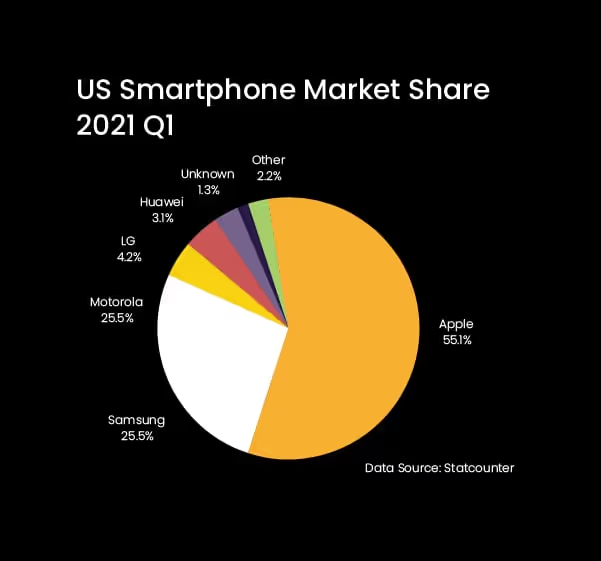
The company complements its unique messaging with a mix of direct-to-consumer (DTC) and third-party channel distribution, allowing Apple to exercise significant control over their customers’ buying experience.
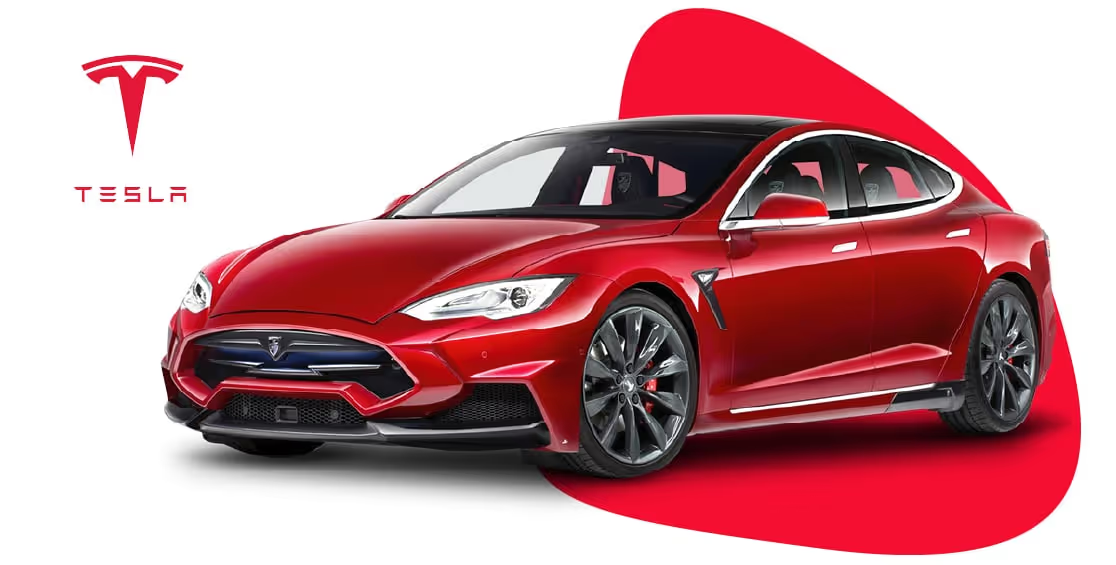
Although Tesla didn’t build the first electric car or the first functional battery in the industry, the company is today seen as a trailblazer in electric automobiles. Again, as with the other companies discussed here, Tesla’s rise to the top of the US car market was largely due to its remarkable GTM strategy.
When the company was first launched, they were aiming to build from the ashes of General Motors’ EV 1, the world’s first (nearly) viable electric car.
Their initial vision was to show the world that it could build an electric car that was not only equal to gasoline-fueled vehicles in terms of utility, but also superior in performance.
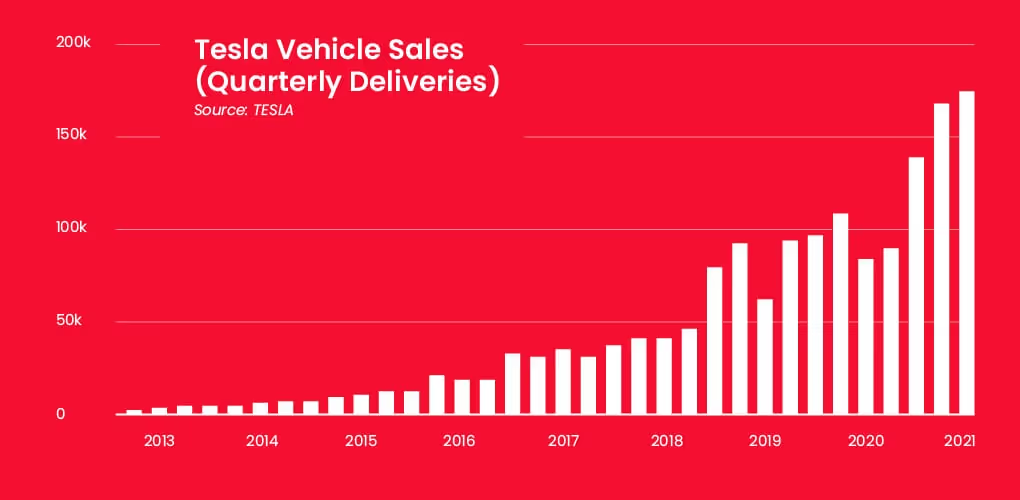
But, where you would expect the company to concentrate on starting small with a market-ready prototype that can quickly achieve mainstream adoption, Tesla flipped the script instead. Tesla focused on four major aspects in its GTM strategy:
Today, Tesla has become an automotive powerhouse. As of June 2021, Tesla has a market capitalization of US$582.94B. The following infographic is of auto manufacturers' market capitalizations as of June 2021.

Have you ever wondered why there’s so much buzz around brands like Starbucks, Coca-Cola, and Apple? Have you asked yourself what makes them so special when many other brands are churning out similar products? Well, if you have, then you’re well on your way to discovering the secret of their success.
Over the years, these companies have been able to maintain top sales of their goods. They’ve established themselves as household names and overshadowed the competition. Putting these companies in a league of their own. This kind of success doesn’t just happen accidentally. They all have achieved success due in part to their dynamic marketing strategies.
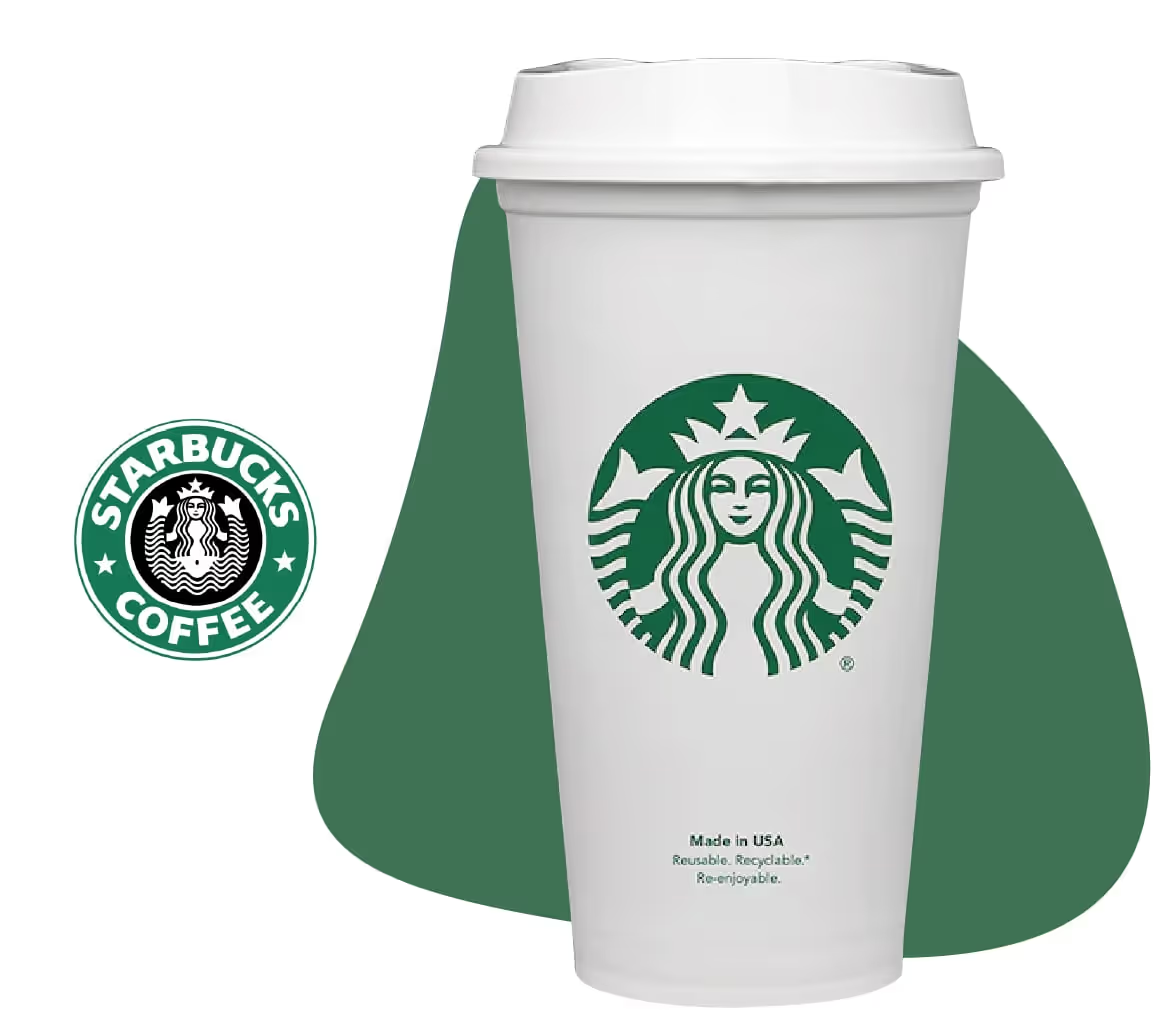
Starbucks has grown and established its roots in various countries. As of 2020, over 32,000 stores were sprawled across several countries. In 2020, Starbucks was estimated to have a net value of around US$29B. Fast forward to 2021 and Starbucks is valued at US$152.67B. Amidst the competition, Starbucks has continued to remain one of the top sellers of coffee. This is owed in part to its unique marketing strategy. This marketing strategy has consequently created a customer base that is ready to queue just to get their coffee.
Here is a list of the marketing strategies Starbucks has used to outshine competitors.
Starbucks didn’t start its operations as a coffee shop, it started as a retail shop for selling roasted beans. It was after Howard Schutz took over the Starbucks company that it began selling beverages.
Howard decided to pivot the business after he traveled to Italy. There he witnessed the way coffee was sold and came back to the US to implement the idea. With proper planning and strategy, he was able to successfully naturalize the concept he saw in Italy in the US. This idea has consequently led to the popularity of Starbucks not only in the US but around the world.
Starbucks does not joke around when it comes to creating awareness for its beverages. They understand the importance of advertisements, and they exploit that area to drive demand for their products. They utilize this especially with their seasonal drinks, for example, their pumpkin spiced latte.
They have a solid social media presence. Furthermore, their social media adverts are personified to speak directly to customers. Also, Starbucks doesn’t take for granted the aspect of engaging customers on social media. Starbucks also creates awareness through its ‘secret menu’ which gains traction on social media, particularly with the younger demographic showing off the unusually colored concoction they got at Starbucks.
Instead of offering the plain old coffee, they took a step forward to mix things up. They produced several varieties of coffees and other assorted beverages. Furthermore, Starbucks included food to their menus, especially meals that are usually taken away with coffee.
The inclusion of food on Starbucks’ menu has resulted in over a 20% rise in revenue. This strategy has helped to provide products that target a wider target audience. Consequently, this helps to generate higher sales.
Starbucks has made it a priority to make sure that all its customers are treated with respect. They understand how bad customer service can negatively affect sales. So they make sure that their customer service is friendly and welcoming.
This great customer service is evident in how they make sure to write the customer’s name on the coffee cup. And then they call out the name of the person across the room. Starbucks’ however, is notorious for spelling names wrong on their coffee cups. Whether by design or complete accident, this is a brilliant marketing strategy as the awareness gained from social media posts and articles written on name fails, keeps Starbucks relevant in society, and gives the customer a laugh.
Starbucks shops are very warm and friendly. Right from the moment you step foot into the store, you instantly fall in love with the arrangement. Starbucks places great emphasis on this “feeling” you get when you enter their store. Starbucks has created an environment where customers come to work or study while ordering coffee. Providing free Wifi and comfortable working conditions.
Starbucks places emphasis on treating employees well and building a healthy workplace culture. This is why Starbucks will pay all employees (US) at least $15/hour within the next 2 years. Starbucks employees also have healthcare and discounted stock options for company shares. Starbucks also covers tuition for employees in an online degree program through Arizona State University. This is all done as the belief is, if staff are happy they’ll make customers happy too.
The Starbucks app has a unique user acquisition and retention strategy. Customers can’t directly connect a credit or debit card to the app, instead, they have to load money onto the app. This gets customers to Starbucks as they have essentially already paid for their coffee without actually receiving it.
The app provides other features such as a gorgeous UX, trackable rewards system, GPS notification when near a Starbucks, freebies, and additional free perks. The value offered through the app boosts customer engagement and increases brand loyalty, this is illustrated through the app’s popularity.
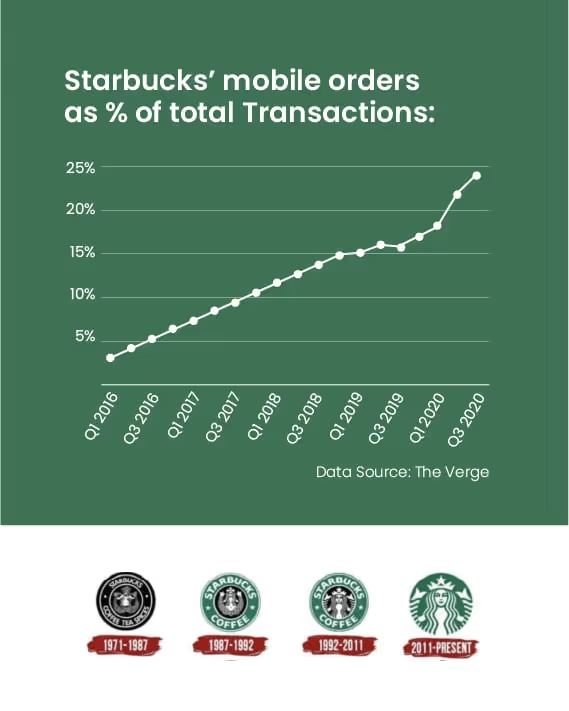
Even though Starbucks’ logo design has seen several changes, it has still maintained its ability to draw attention. This logo stands out and cannot be mistaken when people see it. The design is brightly colored, inadvertently registering itself in the memory of the consumers. This beautiful, spectacular design has played a part in driving sales for Starbucks’ products. Also buying a Starbucks beverage with the logo boldly displayed on the cup gives the consumer a sense of pride since Starbucks is attributed to the high class.


Coca-Cola’s marketing strategies are based on the 4 Ps. Consequently, they have been able to formulate specific strategies tailored to helping them generate massive sales. As of June 2021, the Coca-Cola company has a valuation of US$273.91B. KANTAR expanding on the visual stated “Coca-Cola remains the world’s most chosen brand for the ninth consecutive year, picked 6.5 billion times globally during the year, up 4% year on year based on take-home grocery sales. As online grocery shopping accelerated through the pandemic, Coca-Cola grew its e-commerce sales by 50% to be chosen 59 million times online.
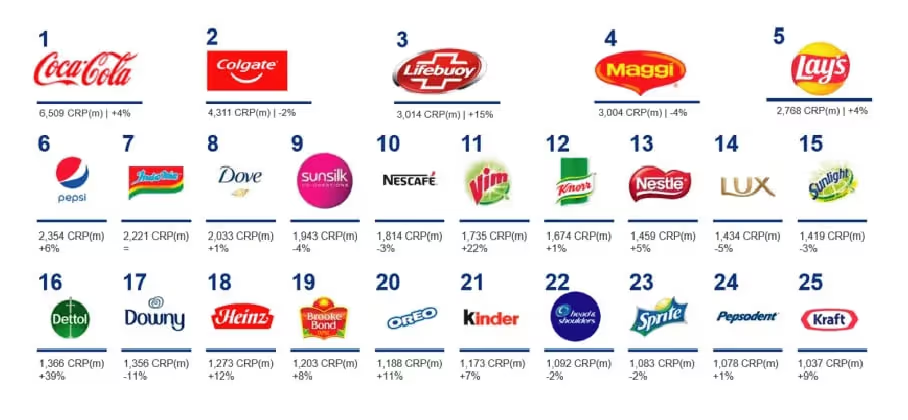
1. Distinctive differentiation
The story behind the creation of the drink Coca-Cola is an interesting one. The production process all started with a man named John Pemberton. After thorough research, he and his nephew Lewis Newman created the recipe used to produce the sweet distinctive Coca-Cola taste.
2. Brand & product image
It is easy for a product to get lost among its competitors if it doesn’t have a spectacular look. Coca-Cola understood this. That’s why they invested in making sure that the packaging of Coca-Cola can be easily distinguished.
First of all, the logo design draws the attention of consumers. This design entails the name Coca-Cola written in a Spencerian font. Over time the design has changed, but the core logo has remained the same.
In the first years of production, the name Coca-Cola was blandly written. It was John Pemberton’s bookkeeper, Frank Robinson, that changed the written Coca-Cola font. And this font has remained unchanged for years. Because of the consistency of the written style, the design has inadvertently imprinted itself on the minds of people across the globe.
Furthermore, the bottle’s design has a structure that stands out from other soda bottles. At one point, Coca-Cola was losing its market share to many other competitors. This caused the Coca-Cola company to host a competition to derive a design for its bottle. A mold shop supervisor Earl R Dean won the competition.
For his inspiration, Earl went in search of words in the dictionary associated with coca. In his search, he stumbled on the word cocoa. Although cocoa has no relationship with Coca-Cola in terms of ingredients, the shape of the cocoa pod appealed to him. After that, he and his team started working on the idea which the Coca-Cola company later adopted.
This design ensures that Coca-Cola is not mistaken for another coke soda. Even when there was a significant conversion from glass to plastic, the shape of the bottle remained evident. Additionally, the design of the Coca-Cola bottle gives it a premium and exclusive look that elicits a feeling of class. So far, this strategy has played a big role in helping Coca-Cola to stand out amidst competitors.

3. High standards, 36 degrees high
In 1919, Coca-Cola made it a tradition to have retailers responsible for maintaining the standard of the product. The company issued that retailers should serve their Coke at 36 degrees Fahrenheit. The company sent salespersons to deliver this message to retailers. Although it might seem impractical today, it was still a good marketing strategy. It ensured that products are never sold to consumers at a substandard level.
4. Price
It is a common concept for starting companies to provide their goods and services at an almost free price. Then when the masses are hooked on their products, these companies steadily increase the price. Coca-Cola applied this same tactic. The price of Coca-Cola remained the same for 70 years (1886-1959) right from the time of production. The price was just 5 cents. This gave Coca-Cola more than enough time to spread from the U.S. to all across several countries. This strategy proved to be very powerful in pushing for the product’s acceptability.
5. Advertising- slogans & market saturation
Coca-Cola has always been keen in the area of advertising. Globally, Coca-Cola spends approximately 4 billion U.S. dollars in advertising its brand and products. Coca-Cola has created awareness by producing completely unrelated items from beach balls to watches. Coca-Cola was one of the first companies to affix their brand to unrelated items, all in a bid to generate awareness.
Coca-Cola is relentless when it comes to the area of advertising. It is unlikely for you not to see an important global event that Coca-Cola doesn’t sponsor. Furthermore, Coca-Cola has always used different slogans in selling its products. Examples of these slogans are “open happiness,” “taste the feeling,” “What you want is Coke.” These slogans became popular sayings and played a part in raising awareness for the Coca-Cola brand.
And so far, it’s been a difficult task for competitors to recreate the exact Coca-Cola taste. The original recipe for the production of Coca-Cola is locked in a vault in Atlanta.
6. Evolving market evolving products
The success of Coca-Cola lies in its willingness to expand its target audience. This was what brought about the creation of Fanta and Sprite, along with the sugar-free Diet Coke and Coke zero.
This shows that the Coca-Cola company keeps trying to make sure that there is a product that caters to all areas of the market. This strategy has helped to improve the marketing of Coca-Cola’s products.
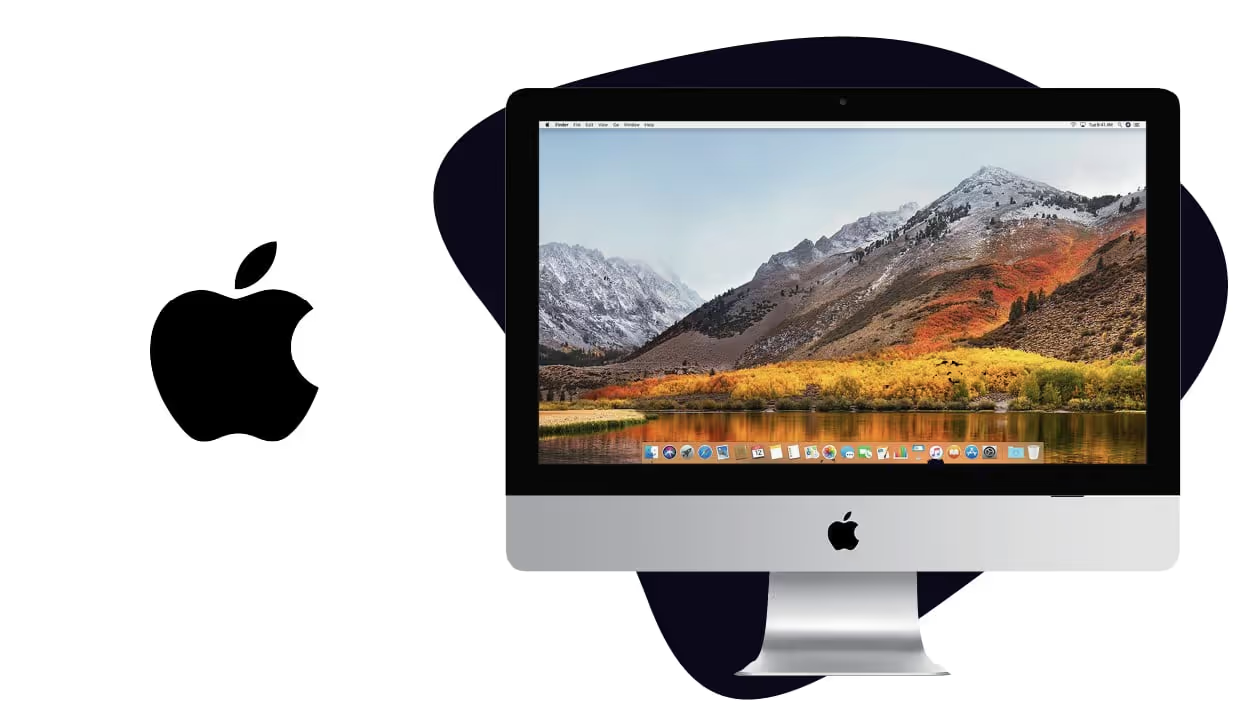
Apple is a perfect example of a company that has formulated a powerful marketing strategy. This strategy has made disciples out of their customers. They’ve managed to create a brand with customers who are willing to stand in line for hours just to get their hands on the latest Apple product. In a study conducted through March 2021 by SellCell revealed that almost 92% of iphone users are going to stay with Apple when next purchasing a phone.

1. Product integrations into daily life
Apple has tried to produce gadgets that blend well with daily activities. These gadgets become a product that you eventually rely on in running your day-to-day activities.
With an iPhone in your pocket or an Apple Watch on your wrist, you can check your calories burned, use your credit card, control your other home gadgets, and more. Apple has made it so easy in such a way that with just a single device, you can control every other thing around you. Apple has proven to be intentional about utility.
2. Customer-centric
Apple has created a die-hard customer base because of the priority it places on its customers. Apple is willing to listen to its customers to give them the products that meet their specific needs. These customers, in turn, bring in other customers.
In addition to this, Apple is intentional about creating a community that involves customers. For instance, Apple organizes free classes for children learning to code. They also host a program, “Today at Apple,” where individuals like musicians, photographers, entrepreneurs, and the likes can come together to ideate their passion.
This is a great marketing strategy because it gives the customers a sense of belonging to the Apple community. This fosters strong followership among users.
3. Multi-market approach
Apple focuses on four main B2B customers. These customers are government, education, SME, and enterprise. For the SME and enterprise segment, Apple tries to get salespersons that will cater to the specific needs of an enterprise.
For instance, the salesperson who has knowledge in medicine will be hired to sell products to those in that business enterprise.
Consequently, Apple hires individuals from all walks of life to serve as salespersons. By doing this, they can have a deeper understanding of the needs of their customers and are thus able to meet their needs.
4. Premium product premium pricing
The price of Apple products is higher in comparison to competitors. But they do not focus on trying to drive demand by selling their products at a lesser price or a discount. Instead, they place attention on generating demand by rendering a spectacular customer experience encapsulated in their products. And this strategy of marketing has made the Apple brand that of luxury and class.
5. Net Promoter Score
This is one of the tools Apple uses to determine their progress and also to pinpoint the aspect they can improve on. NPS is an index that measures a company’s success by determining if a customer will recommend a company’s products to others. This helps to indicate the success of a product and also to ascertain a customer’s brand loyalty.
If the feedback is negative, Apple tries to address the problem as soon as possible. This strategy has been beneficial in keeping the Apple brand far above competitors as they always try to keep improving on their products.
6. Usability
This is one of the selling points for Apple’s products. The goal of Apple is to make sure that products are very easy to use. Apple is not interested in boring its users with technical terms, so it adopts the minimalist approach.
You can see the simplicity in their user interface, brand logo, support functions, and even in their advertisement. Everything appears to be fundamental, thereby emphasizing the core aspects of the product in an easy-to-understand manner.
61% of the organizations that participated in a Logistics Bureau survey didn’t have an effective supply chain strategy in place.
An effective supply chain strategy is essential to every organization, but deciding on the correct supply chain strategy to regulate your business activities is considerably more difficult than it appears. The following 6 supply chain strategy examples are world-renowned businesses. Is it a coincidence that they also have an excellent supply chain strategy in place?

Unilever is a business leader in the consumer goods industry. It deals in packaged food, drinks, personal care items, and cleaning chemicals with a customer base worldwide. In early 2000, Unilever initiated a five-year growth strategy, including a major restructure of its supply chain management. It concentrated on governance, global procurement, supply chain managers, the engagement of suppliers, and technology. Consequently, Unilever generated savings of $14.24 billion from its efforts and became the epitome of technology adoption in the consumer goods industry.
Unilever’s logistics activities provide the most potential for streamlining its supply chain and boosting its ability to meet its ambitious growth targets. The company is merging its almost 30 warehouses into five huge distribution hubs equipped to fulfill customer orders in as little as a day.
Much of the convergence is due to retailers’ adoption of the zero-inventory policy, which necessitates the best utilization of diffusion and cross-docking in warehouses. Unilever established collaborative planning, forecasting, and replenishment (C.P.F.R.) agreements with selected retail clients to optimize asset utilization, cut inventory, and improve efficiency.
Because orders are frequently influenced by factors that are hard to predict, communication between the producer and retailer is essential to improve forecast accuracy. Unilever’s logistics department is now experiencing stronger partnerships with retailers, improved accuracy in forecasts, and greater efficiency in managing promotions.
Through its C.P.F.R strategy, Unilever has improved its forecast accuracy by 10%, which resulted in a 10% reduction in inventory holding and a 5% boost in sales volume. By enabling collaboration with suppliers and enhancing supply chain visibility, you can engage with customers, create trust, have greater insight into all aspects of the supply chain to drive changes, improve forecast accuracy, and respond to potential problems faster and more efficiently.
High replenishment accuracy can only be accomplished through order forecast coordination and expanded supply chain visibility.
- Berkheimer VP of Logisitics at Unilever
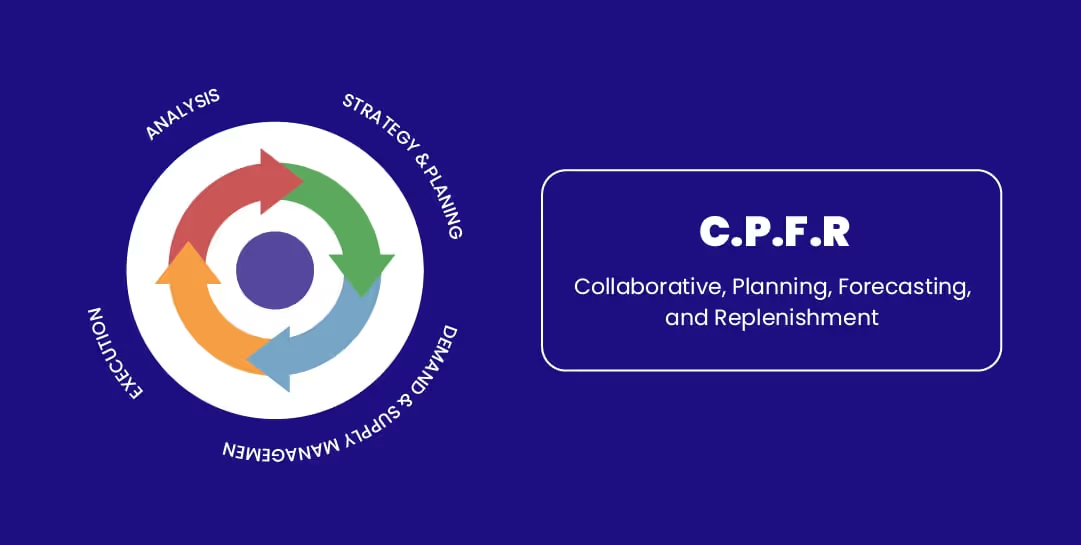

Following over 50 years of operations, Starbucks today has over 25,000 retail shops worldwide. This entails distributing coffee to an extensively large network of retail stores, and Starbucks’ main formula of this efficient network is its incredibly efficient supply chain.
Starbucks has a vertically integrated supply chain, which means Starbucks is engaged in every stage of the supply chain operation, from the coffee bean to the cup of coffee served to customers. By using a vertically integrated system, Starbucks is working with about 300,000 coffee producers globally. The firm argues that its direct interaction with growers guarantees that the same quality and taste standards apply to all its coffee beans.
Starbucks also collaborates with producers directly because they commit themselves to supply fair trade coffee that is responsibly sourced. The corporation even has its own standards for coffee and farmer equity (C.A.F.E.) and C.S.G., which demand all suppliers comply with specified ethical, environmental, and quality criteria. In order to guarantee its producers comply with these criteria, Starbucks utilizes a strict screening system.
First, all the supply chain activities were categorized across four macro operations, i.e., plan, source, manufacture, and deliver. Following that, they created a highly centralized logistics system that enables the organization to effectively manage and organize its global network. Finally, a binary “Scorecard System” has been put in place to evaluate all supply chain activities in four metrics: operational safety, on-time supply and order fulfillment rates, the overall cost of the supply chain, and financial performance in terms of cost-effectiveness.
Starbucks ’ streamlined supply chain structure, management tools, and the utilization of digital technologies enable the firm to attain a high degree of efficiency and responsiveness, which are essential to its organization’s success.

However, in 2008, Peter Gibbons, the company’s Vice President for Global Supply Chain Operations, transformed the company’s complex, ever-expanding supply chain into a simplified, cost-effective process founded on basic operational structures.
Starbucks has been able to ethically source 98.6% of the coffee. Starbucks’ efforts to streamline its supply chain processes are reflected in its increased sales revenue that has been reported as a 5% increase worldwide.
Regardless of the size of your business, streamlining your supply chain processes into a simple structure can help build an agile supply chain that is flexible to cater to the changing customers’ demands. Moreover, supply chain integration across all the stakeholders can give your business an added benefit by giving you effective control over sourcing and distribution.

Over the last two decades, Walmart has established itself as a leader in the retail industry with the highest sales per square foot. In its transformation from regional store to global powerhouse, the company has become famous for its effective management of the supply chain. Walmart has built its operations around the notion that customer’s demands need to be fulfilled in the shortest time possible. The organization has concentrated on building cost structures that enable them to offer lower prices. Following that, Walmart focused on establishing a more organized and comprehensive supply chain management strategy in order to capitalize on and expand this strategic advantage and gain market leadership.
Walmart has revolutionized supply chain management by establishing communication networks with suppliers to strengthen the relationship in order to enhance material flow and reduce inventories. The worldwide network of suppliers, warehouses, and retailers is regarded as nearly like a single company. Cross-docking is a logistic procedure that lies at the heart of Walmart’s strategy of efficiently replenishing stocks. Cross-docking decreases inventory and transport costs and saves transport time.

Through its effective communication networks with suppliers, Walmart has reduced its out-of-stock occurrences by 16%. Just like Walmart, you can also benefit tremendously through strategic vendor partnerships and implementing cross-docking as an inventory management strategy. Strategic relationships with the vendor can enable your business to access new markets and improve business operations. Cross-docking is an inventory strategy where products are directly transported to retail stores without being stored at warehouses. It helps in lowering inventory management costs, transport costs, and transport time.
Walmart has long been involved in strategic sourcing to locate suppliers capable of meeting demand while offering the best price. The firm then forms strategic alliances with its vendors, promising them long-term and increased purchases in return for the cheapest possible pricing.

Several factors have helped Amazon become the e-commerce giant it is today, but its highly efficient supply chain is the most significant part of its success. Amazon’s effective supply chain management revolves around three fundamental elements, its extensive warehouse and distribution network, a diversified fleet, and the implementation of advanced technology in its supply chain operations.
The firm now manages more than 185 fulfillment centers worldwide, with over 25 sortation centers and 75 fulfillment facilities in North America alone. Furthermore, Amazon has over 500 warehouses globally. The worldwide presence, mainly in large urban areas allows the firm to complete customer orders efficiently at affordable rates. Amazon employs robots in its warehouses and fulfillment centers to pick and pack orders and also load and store stock. This enables the company to accelerate its operations beyond human capacity. Furthermore, Amazon recently introduced Scout; a six-wheeled automatic delivery robot to carry products to customers’ doors.
Amazon has reported an inventory turnover of around 10.92, which is incredibly good considering the size and scale of Amazon’s operations and outgoing inventory. A considerable amount of resources are required to create such a significant supply chain. However, your business may accomplish the same results with the same agility, creativity, and customer-focused strategy. By implementing these supply chain strategies and constantly enhancing your operational procedures, you can broaden your company’s network while also boosting client satisfaction and loyalty.
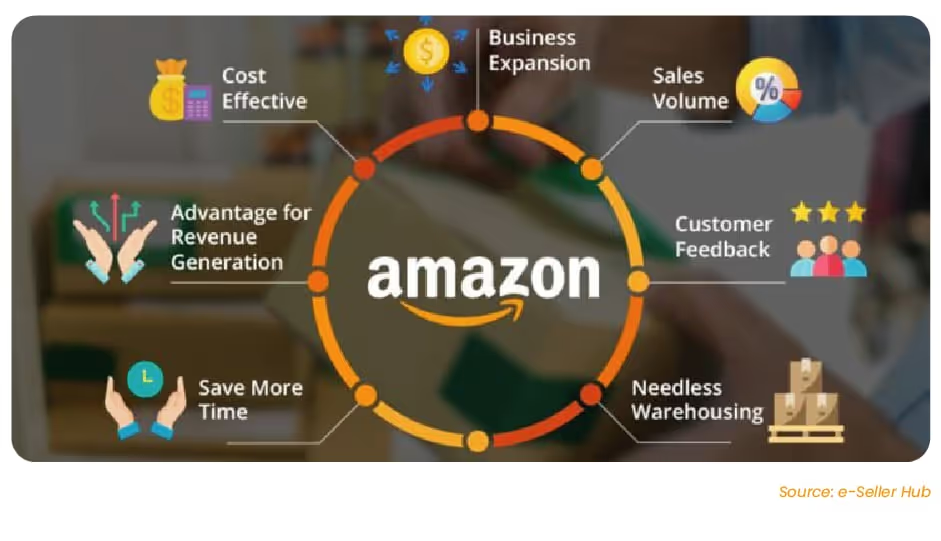
Sellers may utilize the massive shipping network that Amazon has to their benefit by participating in the Fulfill by Amazon (FBA) program, which requires them to send their items to Amazon’s fulfillment centers where Amazon handles their packing and delivery. It also offers necessary customer service. Furthermore, Amazon provides its FBA Onsite program in which Amazon optimizes the seller’s processes by using its own warehouse management software. Suppliers continue to retain their inventories at their locations while Amazon picks up orders from a supplier warehouse and determines the most cost-efficient fulfillment option.

The automobile industry has come a long way from the days of Henry Ford utilizing an assembly line manufacturing process to expedite the creation of a single-vehicle model. Tesla is now producing revolutionary, tremendously popular, and elegant automobiles directly in California, a place with extremely expensive real estate, while other auto manufacturers are outsourcing their operations abroad to lower-cost locations.
We can evaluate Tesla’s supply chain strategy over time and discover certain distinct characteristics that set it apart from its competitors. Tesla’s business model is based on a concept that has been fundamental to their success: a determination to take entire control of the supply chain, from raw materials to technological integration to the final user experience.
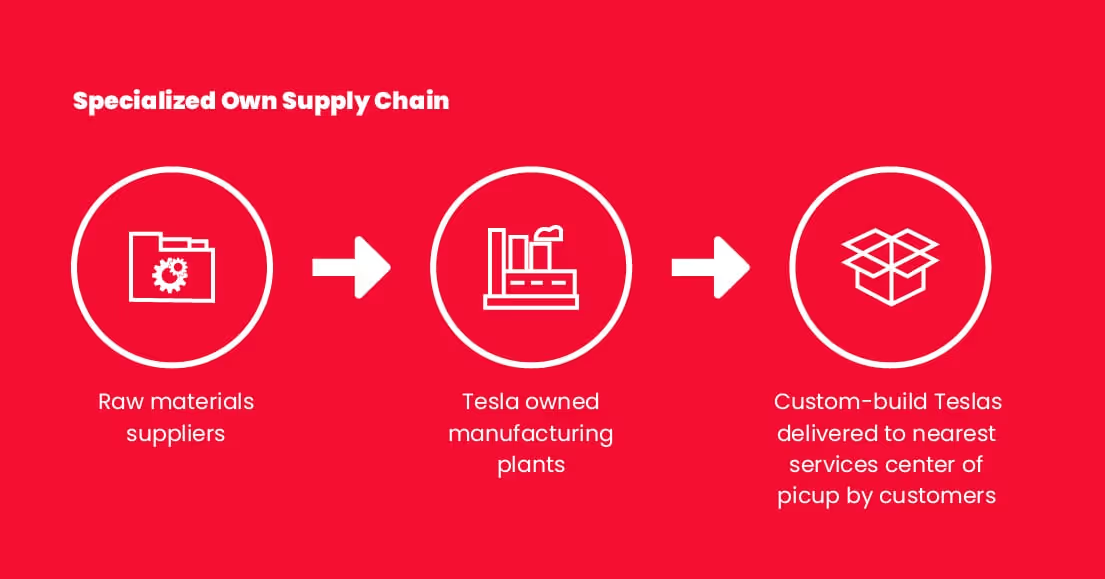
It also owns a big battery factory. It designs, produces, sells, and services its own products through its own sales and service network. Tesla has served a significant role in the restructuring of the automobile industry, particularly in terms of customer relationships. The company’s digital supply chain is even more intriguing, which involves releasing new software and algorithm upgrades to existing car owners utilizing cloud computing.
Instead of having an extensive supply chain network of low-cost part manufacturers, Tesla has a vertically integrated supply chain with a huge car plant close to its corporate headquarters.

Nike is the world’s leading sportswear brand. The multinational giant, one of the most famous brands in the world, is perhaps the most significant player in the contemporary textile business. Nike’s supply chain is extremely complicated, with millions of sneakers and other items sold each year. Although there are clearly considerable challenges in managing such complex supply chains, Nike’s proactive strategy to supply chain management is a major contributor to its amazing success.
Nike’s supply chain strategy is centered around three basic principles: outsourcing, diversifying to reduce risk, and corporate social responsibility to govern the company’s impact on the societies in which it operates. Its supply chain has been developed from these core principles to one of the most successful supply chains globally.
Outsourcing and diversification are two fundamental elements guiding Nike’s supply chain strategy. Nike outsources all of its footwear and textile manufacturing to independent vendors.
It was one of the first international corporations to use this strategy. Outsourcing is inherently dangerous, but Nike effectively managed this risk from the start by diversifying its supply base considerably. Nike is less susceptible to unforeseeable situations like accidents and adverse weather events since it is not entirely dependent on any one source.
Nike ensures continuous communication with its suppliers to ensure that its high-quality requirements are followed at every stage of manufacturing, offering support through resources and training to introduce suppliers in Total Quality Management (TQM) methodology.
Nike adopts an ambitious strategy to monitor the effects of its supply chain that highlights its forward-thinking. Nike procured 93% of its products and components from sustainably managed factories in 2019. It has also ended its business with factories that force their employees to do excessive overtime. All these factors have contributed to Nike’s phenomenal success in the global market.
Nike’s unique distribution model enables it to reduce costs by $0.15 per unit. Considering the amount of stock Nike produces, $0.15 saving in manufacturing overhead saves millions of dollars for Nike.
A report by McKinsey & Company, titled Diversity Matters, compares the impact “of an inclusive workplace on the financial performance of the company.
Diverse companies, who focus on racial and ethnic diversity, are 35% more likely to perform better financially.
As compared to organizations that “have buried their head in the sand.
Companies that foster gender diversity in the workplace can do 15% better than their competitors when it comes to achieving higher profits than the standard industry median values.
Let’s explore how various diverse companies around the world practice culture management and build a different company culture.

Johnson & Johnson (J&J) is a globally recognized company widely known for producing consumer goods, pharmaceuticals, and medical devices. The company has more than 130,000 employees worldwide and over the past few decades, it has managed to create an inclusive workplace by introducing a diversity strategy that focused on change across all levels.
Johnson & Johnson also founded the ‘Diversity University’ – a website that’s accessible to all employees and gives them the resources they need to believe in an inclusive workplace. A look at their Diversity, Equity & Inclusion Impact Review shows that it has conducted unconscious bias training for almost 95% of its workforce, and more than 21,000 employees were included in their employee resource groups.

Diversity & Inclusion at Johnson & Johnson is not just a commitment—it is the reality of how we live and work. The best innovations can only come if our people reflect the world’s full diversity of individuals, opinions, and approaches.
Alex Gorsky CEO & Chairman of J&J
Although J&J spends more than a billion dollars on their diversity and inclusion program, they have also reaped great benefits in this regard. As a consequence, their employee retention went up by almost 27%, engagement by 43%, and customer loyalty stands at an astounding 58%, which is a strong measure of success for any company. J&J is repeatedly named as the Best Place to Work for working mothers and for disability inclusion.
A key takeaway from Johnson & Johnson’s diversity strategy is that when you’re trying to change things within your company, start from the top level. You can’t expect your subordinates to initiate change because they don’t have a say in the company’s affairs. By leading from the front, you can empower your workforce and work toward a diverse company culture that can last for decades, as can be seen in their case.
MasterCard is a financial services giant with a global workforce of over 28,000. By embracing diversity, the company took up the fight against racism and ensured to provide equal prospects for all individuals, irrespective of their race, ethnicity, gender, faith, or other causes of bias.
MasterCard’s diversity strategy is much more than just bringing together people with different backgrounds. Their company culture operates on the belief that diverse backgrounds and differences among the employees help bring them closer together and allow them to work toward better decision making, which ultimately leads to higher business growth. They also believe that diversity is the backbone of innovation, which can be seen through one of its unique projects, titled YoPros BRG.
Short for Young Professionals Business Resource Group, YoPros BRG is a different approach to embracing diversity within the workplace. It focuses on a ‘Social Media Reverse Mentoring’ program, where younger employees are tasked with teaching older employees the ins and outs of social media platforms. This allowed the older professionals to become better acquainted with social media usage.
Apart from this, it also set up a Global Inclusion and Diversity Office, which focuses on a diverse workplace where employees feel valued and respected. When people are put first in the organization, their performance improves naturally, and they work with more passion and dedication, which greatly empowers the organization.
Inclusivity and diversity are ingrained into the work culture fabric at MasterCard, which can be seen by the Inclusive Growth section in its Corporate Sustainability Report 2019. It also aligns perfectly with the U.S. demographics and Federal- endorsed categories.

The success of MasterCard’s diversity and inclusion programs allowed them to reach out to a more diverse customer base, and it recorded a better financial performance as soon as the corresponding year. By implementing a diverse workforce, the company was able to record more insightful consumer data that allowed them to understand their customers’ needs better. Moreover, it managed to secure a spot among the 50 Best Companies for Diversity list compiled by DiversityInc.
One thing that we’ll steal from MasterCard’s global diversity and inclusivity programs is that simply speaking out against racism or discrimination isn’t enough – it should be backed by effort and dedication to making things right. Only through conscious efforts can you build an organization that is free from bias and discrimination.

Accenture is one of the world’s largest professional services and consulting companies, with a workforce of more than 400,000 employees. This made it all the more important for them to come up with a cultural strategy that enables them to bring together people with differences.
Accenture believes in organizational diversity and asserts that discrimination isn’t acceptable, irrespective of age, disability, gender, ethnicity, faith, race, sexual orientation, or any other factor that makes people different.
The company fostered a diversity training program, which focused on diversity awareness, diversity management, and professional development. Diversity awareness refers to explaining the benefits of a diverse workplace, and its impact on productivity, decision making, and financial performance. Through diversity management, executives were able to create dynamic and diverse teams that included people from all types of backgrounds. This move allowed teams to collaborate more efficiently and bring forth better results.
Accenture also set its sights on professional development, which empowered women, LGBTQ+, and culturally diverse employees to learn new skills that they could use for personal and professional growth.
Accenture also holds a worldwide company celebration on the International Day of Persons with Disabilities, where it honors its employees and vows to help them through training, supportive technology, and flexible working arrangements.
Our unwavering commitment to inclusion and diversity unleashes innovation and creates a culture where everyone feels they have equal opportunity.
Aulie Sweet CEO of Accenture
The biggest benefit that Accenture received from these programs is that it got access to a wider database of exceptional talent that it could hire. This also brought about an increase in innovation and diversity of thought, as a group of unique and diverse individuals are able to draw from their differing perspectives to create special things.
Accenture has based its entire organizational culture around diversity and inclusivity, and not just for ethnically diverse groups. Its focus on diversity including gender and sexual orientation has enabled many people to find a solid footing in their professional careers. It also tried to end the bias against employees who are different and stated that this is one major factor hindering growth.

Who doesn’t know about Coca-Cola? For most people, it’s one of the most popular beverages and for some, it’s a high-performing stock. The company is a global giant, with over 80,000 employees and a worldwide presence in over 200 countries and territories. Coca-Cola employs diversity, equity, and inclusion as its core values, and its policies and actions are focused on empowering largely marginalized employees and those discriminated against due to their gender, sexual orientation, race, ethnicity, or disabilities.
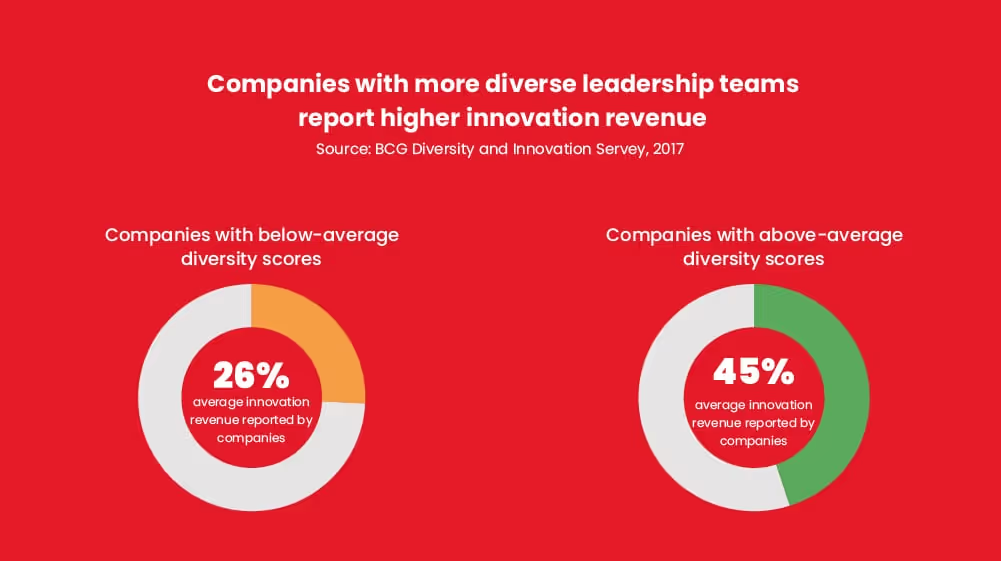
Diversity is more than just making policies. Rather, it requires a complete overhaul of the workplace to accept and accommodate people who are different, and this has far-reaching effects when it comes to company growth and profitability. In fact, a Boston Consulting Group study also showed companies that have more diversity in their executive and managerial levels experience higher innovation.
Coca-Cola also introduced diversity education programs designed to educate all employees about the benefits and impact of working collaboratively. These programs included Diversity Training, a Diversity Library, and a Diversity Speaker Series. It provided their employees with the resources and tools they needed to understand what an inclusive workplace is, and what they can do to make their fellow employees feel more comfortable.
It also launched the “Coca-Cola Millennial Voices”, which features a group of young employees who are responsible for employee retention among millennial employees. This movement also led to a new parental benefits policy, where new parents receive up to six weeks of paid leave.

Coca-Cola’s Diversity and Inclusion movement made it possible for “people with differences” to have sustainable and promising jobs, and have a greater say in pivotal business matters. This also brought about increased professional growth for employees who were otherwise treated unjustly.
The Coca-Cola Company won one Diversity & Inclusion Award in 2018 and two in 2017. In fact, they’re a consistent member of DiversityInc’s annual Top 50 Companies For Diversity and are among the Top 10 For Commitment To Gender Equality.
No diversity strategy can ever become successful unless your employees, on all levels, start to realize the value and potential of diversity in the workplace. Whether you’re a small startup or a large company, Coca-Cola leaves no stone unturned when it comes to promoting diversity as an organization.
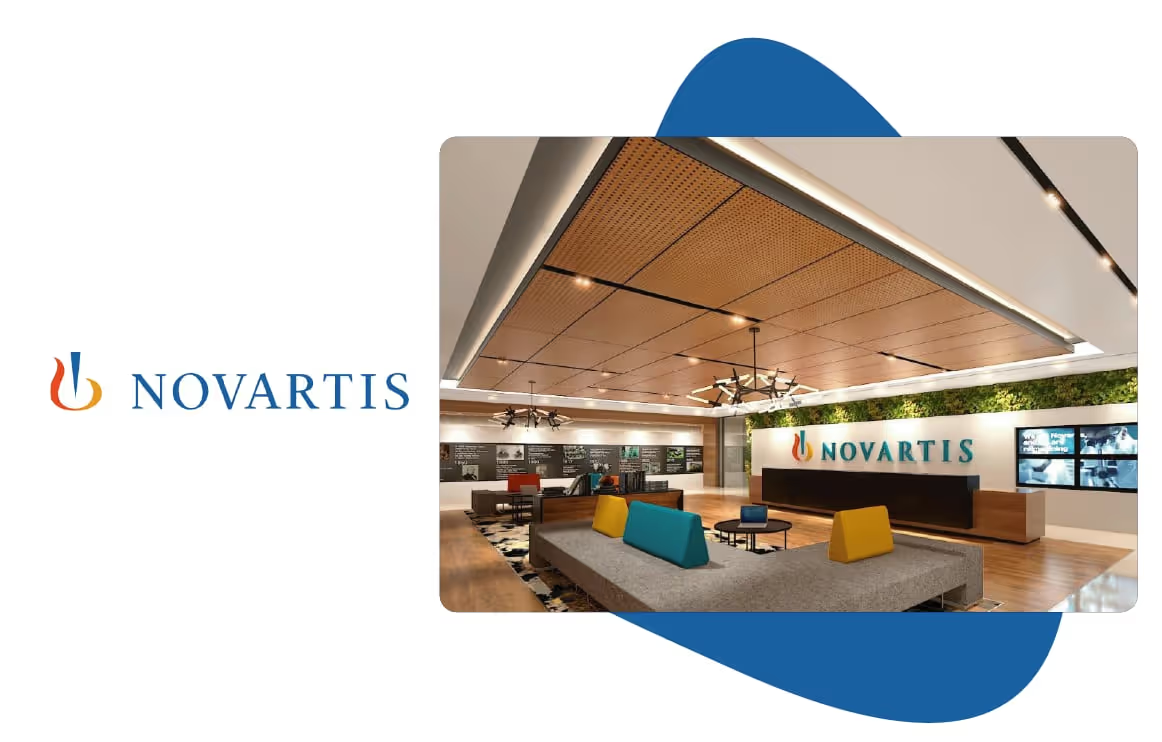
Widely regarded as one of the leading pharmaceutical companies across the globe, Novartis has a strong workforce of 100,000+, and they strongly believe that diversity is the key to their success. In fact, they’ve also substituted the word “disability” with “diverseability”, because people with disabilities have a lot to contribute to the organization.
The company has included diversity into its HR management strategy, allowing its HR professionals to educate their employees on topics like unconscious prejudice, inclusive leadership, accommodating disabled people, and pay equity to help them tailor their recruitment strategy accordingly.
Apart from having a more experienced and diverse workforce, the company has also expanded the scope of its clinical trials and research to include underrepresented people and also find cures for illnesses that they go through.
Novartis’ diversity and inclusion programs enable them to understand patient needs and also come up with innovative methods and technologies to find cures and treatments for them. Its diversity and inclusion programs have far-reaching societal impacts that greatly benefit communities that are discriminated against. This is why Novartis has made it to the Bloomberg Gender-Equality Index 2021, which features more than 380 companies across 44 countries.
Diversity and inclusivity must be deeply ingrained into the work culture. The passion and dedication of all employees must always be highly regarded, and their contributions must greatly be recognized, which encourages them to work harder. Like Novartis, your company should also value racial equity and justice for all people, regardless of their background or any differences.

Widely regarded for its hospitality and tourism services, Marriott International is one of the top hospitality companies in the world, with hotels and resorts across the globe. The group has more than 180,000 employees all over the world.
The hospitality and tourism industry thrives on diversity and inclusivity, and it welcomes all people regardless of their differences. The same principles are employed by Marriott towards its employees, and it has worked hard to ensure a diverse workplace that spreads across all of its hotels, resorts, and suites across various countries. Since 1927, Marriott has greatly valued the benefits of diversity in the workplace.
Apart from respecting and including diverse employees, Marriott International has also included a greater role for women into their work culture, which is why 10% of their supply chain vendors consist of female-owned businesses. The company has also made strides by making it one of the Best Places to Work for LGBTQ Equality in 2021, according to the HRC’s 2021 Corporate Equality Index.
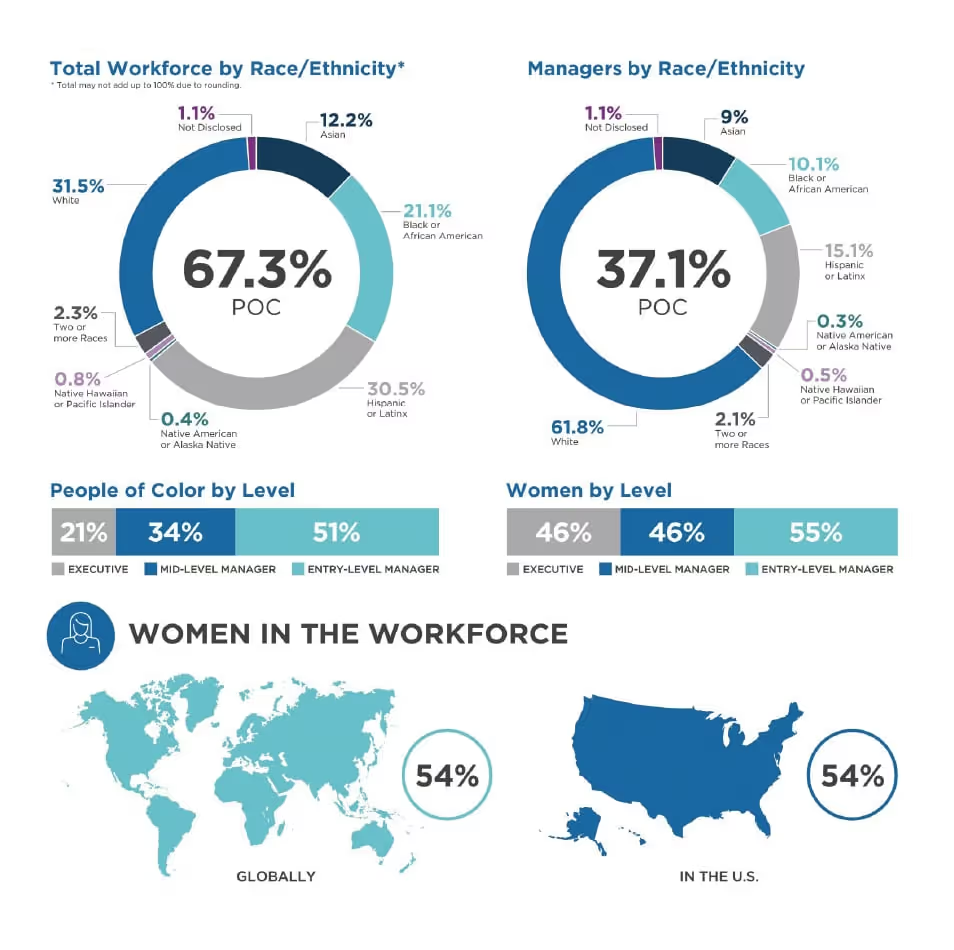
The company has made it to the list of “World’s Best Multinational Workplaces” by Great Place to Work® and also ranked at No. 15 among the Fortune 100 Best Companies to Work For. Needless to say, it has been riding the wave by recording a better financial performance every year.
By forming a diverse and inclusive workplace, Marriott International ensures the happiness and satisfaction of its employees on all levels. Moreover, their business goals are also aligned with their diversity strategy, and the company also strives to empower people with disabilities. The key takeaway from this is that employees work harder when they are happier and more comfortable in their work environment.
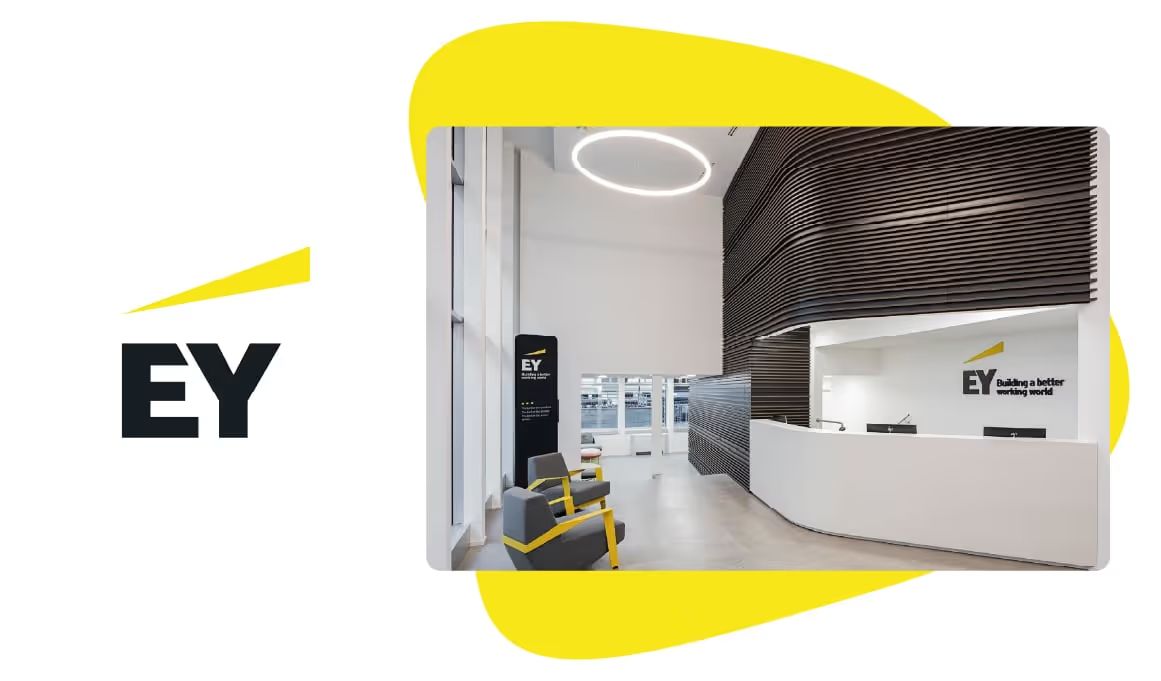
EY is a professional services company that enjoys a strong foothold across the world, and it boasts a diverse employee culture with more than 300,000 employees across all levels. The company holds a firm belief in the fact that it can perform better when people with different opinions, cultural backgrounds, skill sets, and experiences are given a voice. This allows the company to get ahead of its competitors and stay on top within the global business sphere.
EY has also introduced various diversity and inclusion programs, including the EY Launch. Under the program, freshmen, sophomores, and transfer students are educated about the benefits of accounting as a major. Moreover, they’re also made aware of joining professional services as a promising career option.
EY has held fast its diverse beliefs and perspectives and has incorporated them into its work culture, which helps them make better decisions, facilitate innovative measures, build a more agile workspace, and also combat discrimination and inequality. This is reflected in the EY Global Executive Diversity & Inclusion Statement.
EY was one of the first companies that included its partner-level executives in decision making and strategy execution regarding diversity recruitment. This has brought about a massive change in the organization, with more women being hired on top executive management positions. In fact, female leadership increased by more than 20% following these measures.
There’s no inclusivity if you don’t include everyone – how can you even use the term “everyone” when you’re excluding any particular group of people. EY has greatly empowered people from diverse backgrounds, which has significantly strengthened their diverse leadership and accelerated their business growth as well.

Wrigley, the now-iconic American chewing gum company was founded in Chicago by William Wrigley Jr in 1891. The Wrigley story showcases the potential that pivoting a business can have when consumer trends are recognized and aligned with. Wrigley didn’t initially start off manufacturing and selling chewing gum. When William Wrigley Jr moved to Chicago in 1891 and started Wrigley’s, the business sold soap.
Wrigley was offering baking powder as a free incentive to buy soap, however, the baking powder quickly became more popular and desired by consumers than the soap. This was Wrigley’s first pivot as in 1892 he started to sell the baking powder alongside his soap. The baking powder shortly became the primary product sold by Wrigley.
Wrigley continued his premium strategy offering free chewing gum packets with every baking powder purchase. As you can probably guess it didn’t take long for the chewing gum to become more popular than the baking powder itself. So in 1893 Wrigley pivoted again, abandoning both baking powder and soap to manufacture and sell chewing gum.
Pivoting a business as drastically as Wrigley did twice in three years can be viewed as a high risk high reward situation. Normally that would be true, but Wrigley was in a unique situation. His free offerings of baking “ powder and chewing gum were essentially product trials. This meant that Wrigley was pivoting his business in alignment with consumer trends, as consumers approved of his baking powder and then his gum. These pivots were effective as Wrigley already had the existing capabilities to produce and provided the opportunity for greater sustainable growth.
In 2020 Mars Wrigley led the sugar gum category with 71 % of the market share and occupied 55.2 % of the sugar-free gum market share.

Chipotle Mexican Grill is a great example of an effective business pivot by a non-tech business. Like quite a number of strategic pivots, Chipotle’s came off the back of disaster. The prominent fast-casual taco & mission burrito restaurant experienced every restaurant chain’s worst nightmare back in the latter stages of 2015 into early 2016. Chipotle was responsible for two E. coli outbreaks that resulted in around 55 people being poisoned. This along with a number of other food safety issues caused PR chaos as the public became scared to eat at Chipotle. This resulted in store closures, a drop in sales by approximately 20%, and a plummeting share price.
The events that had unfolded required Chipotle to pivot its overall strategy to align long term to the improvement of food safety standards and to regain and maintain consumer confidence. Chipotle reaffirmed its strategic intent by adapting its food storage and preparation standards, prioritizing hygiene through strict employee protocols in conjunction with the installation of improved air filtration systems.
This pivot to a prioritized health and safety strategy prepared Chipotle to thrive in the madness that was 2020. When the Covid-19 pandemic shut down the world as we knew it and the hospitality industry was left scrambling, Chipotle was already set up for these circumstances.
The only two things we had to implement during Covid-19 was the idea of social distancing and not wearing masks.
Brian Niccol CEO & Chairman of Chipotle
Chipotle was able to adapt to the new reality quickly implementing strategies such as contactless delivery, drive-thru for mobile orders, and a digital-only menu. These small adaptations to their strategy enhanced Chipotle’s value and allowed them to continue pursuing sustainable growth and profitability. Which they did successfully, as Chipotle increased total revenue by 7.1% to $6USD Billion from 2019 to 2020. A large portion of this increase can be attributed to the 174.1% increase in digital sales to $2.8USD Billion, which totaled 46.2% of sales in 2020.

As we all well know (and are sick of being reminded about!) Covid-19 temporarily changed the entire fabric of our existence as we knew it. Whilst things are returning to some form of normality for the majority of the world, the impact that Covid-19 has had on some businesses will remain.
The multinational consumer goods company Unilever is an example of a Covid related pivot. With over 400 brands Unilever’s products span across the foods & refreshments, home care, and beauty & personal care industries. Unilever’s product demand was impacted by Covid as demand for products like hand sanitizer skyrocketed whilst demand for things like beauty products decreased.
Unilever reallocated resources to enable increased manufacturing of hand sanitizer and other in demand products. Unilever was able to successfully pivot in this manner, as they aligned to the new consumer demands through a lateral extension of existing capabilities. This contributed to Unilever only posting 2.4% less global revenue than in 2019. Unilever also donated over €100m of soap, hand sanitizer, bleach and food during 2020 to aid the global response to Covid-19. As showcased in the Annual Revenue Graph below.
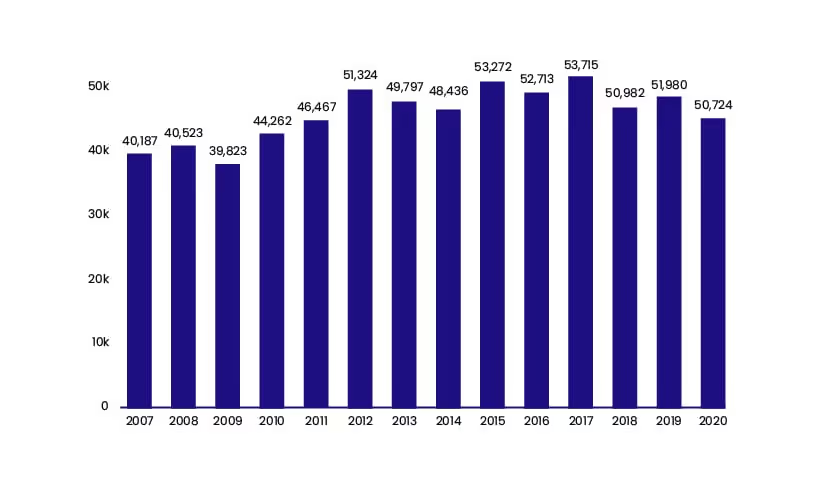
Customer Experience’, the business deliverables buzzword that has seen exponential growth in use this past decade, as businesses are recognizing the importance of customer connection to overall business success.
A business’s true purpose is to create and keep customers.
Peter Drucker
Although seemingly simple, this is not well understood by most businesses Some businesses are unsure as to why they need to worry about customer experience, while others try to collect data but don’t circulate the findings.
A survey by Bain & Company studied the customers of 362 companies. The findings revealed that only 8% of customers classified their experience as “superior”, whereas 82% of companies “believe” that they deliver a superior experience - the former believed in customer empathy.
This disparity allows for a great deal of improvement with an urgent need: the millennial customer has a huge number of choices, and more channels than ever before to pursue them. In such a scenario, a simple, integrated customer experience will win the favor of the time-pressed customer.
Businesses have the opportunity to obtain market share through adopting a customer-centric approach to business. As in a competitive market having an established customer connection can provide differentiation and become a business’s unique value proposition.
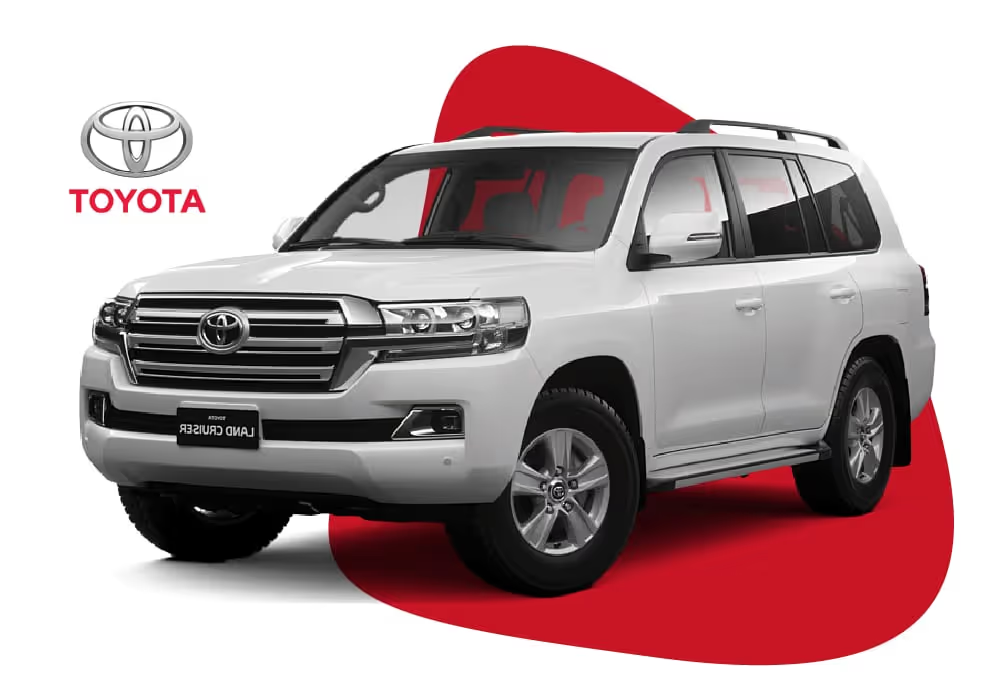
Toyota, the global car giant adopts a “customer first” philosophy. With a commitment to deliver the highest quality products and provide complete customer satisfaction, derived from its customer-centric focus the company adopts a strategy aiming at constant development.
Toyota has effective procedures in line so that whenever a customer faces a problem, the issue can be assessed promptly with the least inconvenience for the customer - highlighting the importance of maintaining a customer connection to Toyota.
The three-tier approach adopted by the company is how it drives innovation through engaging with its customers, employees, and dealers to deliver an unmatchable experience. Establishing its name as a testament to reliability, quality, and longevity, Toyota’s business methodology is based on ‘Kaizen’, which means continuous improvement.
This underlying principle, coupled with Toyota’s belief statement ‘a better tomorrow starts today’ has enabled them to gain customers through their customer connection, exceptional offerings, and extraordinary user experience.
The General Manager of the Customer Services Division, Spencer Morris, shared that “customers will tell you everything you need to know about how to improve your business.” This highlights the importance of customer connection as insights into the issues faced by customers is best understood by the customers themselves. This is how the Kaizen philosophy was adopted and deployed the Customer Radar technology.
From vehicle performance to user behavior, Toyota collects and organizes all this data to improve the customer experience. It has partnered with Acxiom, which provides Toyota with a unified view of the customers all across its marketing ecosystem, with the objective being to deliver an exceptional user experience.
The customer experience is not completely reflected unless it becomes ingrained in every part of the company’s processes. When employees observe a culture whereby the senior management acts on customer feedback and information from user experience, they tend to base their actions on that information too - and this asserts the importance of employee feedback.
Incorporating core values such as independence, respect, collaboration, and excellence into how the company operates helps connect people while developing a shared purpose. The employees are the touchpoints to the customer experience delivery, this means the feedback employees can provide is invaluable. This showcases why acting upon regular employee feedback paves the way for success.
Toyota believes that whenever anyone purchases a Toyota, they place their trust in the company. Now, this trust calls for a focus on a culture that is built on the delivery of customer experience. Employees are part of the company’s structure that ensures a focus on quality improvement and assurance. This is part of the driving force behind ToyotaCare, Toyota’s maintenance and roadside assist plan which comes free with every Toyota.

The secret to a good user experience lies in the company’s vision and ability to deliver. A successful brand shapes the experience by embedding value in all of its offerings. Costco’s customer experience is positively reflected as it is ranked 6th for the most relevant US brand in 2021.
Costco, the retail giant with over 94 million members is here because of how it clearly established the customer experience vision. Not only that, but it has also become a travel destination too, as a fan stated that she has been to 70 Costco stores. This level of enthusiasm for a grocery store seems unreasonable unless you are a Costco customer.
Patricia Hong, a global management consulting firm partner, said in an interview that most of Costco’s customer base is addicted to the Costco shopping experience. It is part of Costco’s vision to get you hooked with everything, from the psychological tactics to the store layout, to bulk-buying value, and of course, valuing the customer feedback.
Costco has built a connection with its customers that has withstood testing times. This would be aptly explained by its strategy adopted during COVID. With consumer trust being at an all-time low, Costco has been able to cater to a wide range of panicked customers. Prioritizing customer feedback along with customer connection has made it stand out from the crowd. There is something magical about the company’s customer experience, as it scored the highest in the ACSI, and knocked off Amazon from a position it held for almost a decade. Mind-blowing and self-explanatory?
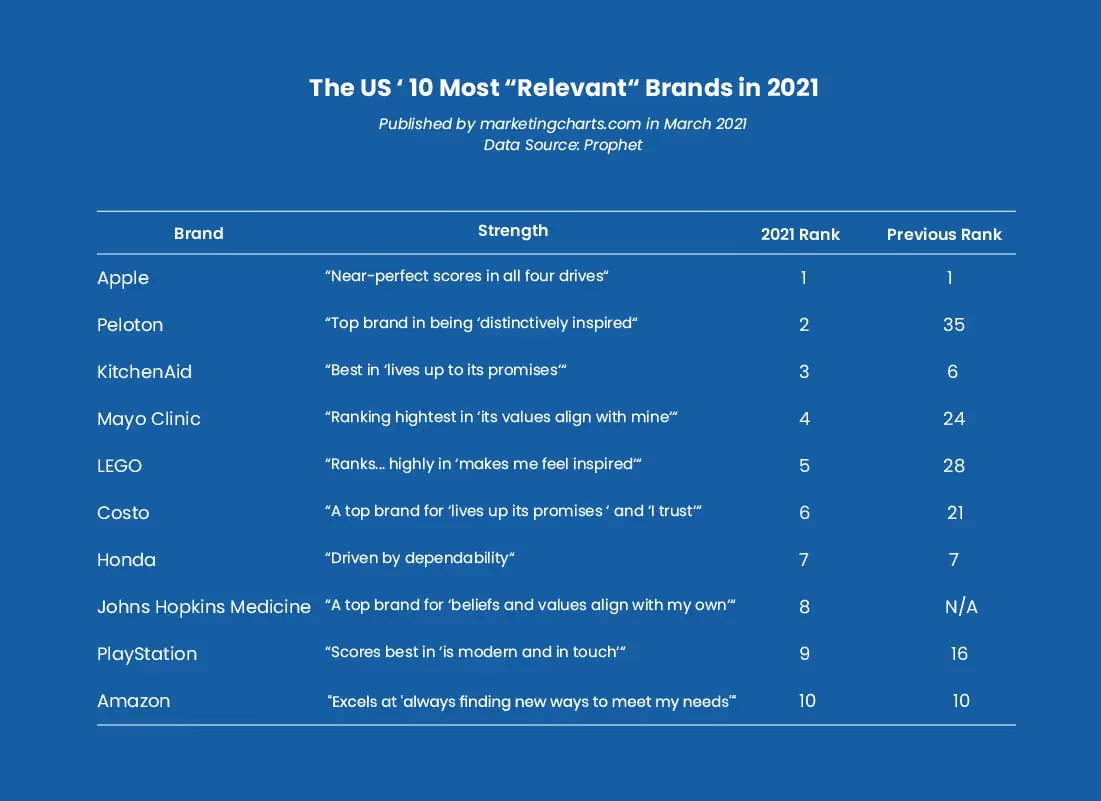
There is something about Costco that keeps customers coming back amidst the chaos. The primary factor is that of innovation. During the pandemic, it took a lot of steps to ensure consumer safety and came up with better ways to protect its customers, particularly those aged 60 and above. Costco prioritized building a connection that made the customers feel like “we are in this together”.
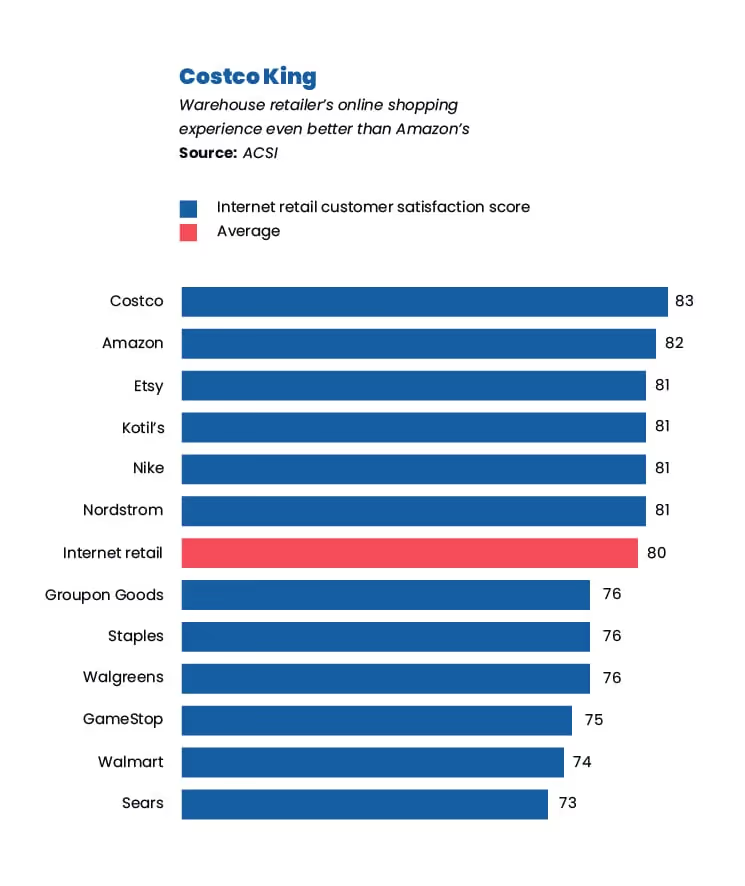
While the customer may always be right, there are times when they are not. The pandemic was a testament to such times. The company’s CEO Craig Jelinek said, “While the circumstances continue to change and we modify our operations as necessary, we thank you for your patience and cooperation. As new developments occur, be assured we are committed to taking care of our members and employees and to our mission of providing low prices, quality merchandise, and exceptional service.”
The customer-centric approach allows for a unique shopping experience, through innovation and acting on customer feedback. This has contributed to amassing the market share Costco has.

The leading American multinational retail corporation Walmart brightens the customer experience by understanding its customers. Walmart has created a seamless experience both online and its 11,700 stores, Walmart delivers an experience that repeatedly brings back its loyal customers.
The factor that establishes Walmart as an industry leader is a deeper knowledge of its customers and a commitment to deliver the ultimate convenience, customer empathy in short. Store Maps, New Online Shopping Experience, Easier Marketplace Shopping, are some of the actions it took in wake of the evolving shopping dynamics. Scott Hilton, the chief revenue officer of Walmart said that they decided to rebuild the website so customers can get a totally different shopping experience.
The retail giant has established a reputation and overall credibility which offers their vast range of customers value that keeps them coming back. Believing in reaching where others have not, Walmart works on delivering a great user experience by being one step ahead.
Denise Incandela, Walmart’s Customer Experience Manager, says customers are the backbone of the company’s success; and this means a repeat shopping rate, acquisition of new customers, a focus on customer empathy, and continued brand building.
An emotional connection with the customers is imperative, because, let’s face it, customer empathy is the key to success. Brands that connect with the customers and build themselves based on customer- facing functions tend to act with reference to the customer experience.
Walmart realizes the importance of good customer feedback and its link to sales and enhanced business performance. People’s expectations are linked with their prior experiences with a company, which is why feedback is greatly important. Capturing and building on customer feedback helps Walmart transform its people’s expectations into a reliable and enjoyable experience.
Working on a customer-centric approach, Walmart incorporates customer empathy and seeks reviews from its customers that help inform organizational processes. The brand is “customer-obsessed”, and aims to provide the best customer experience to its existing and new customers.
There is only one boss. The customer. And he can fire everybody in the company from the chairman on down, simply by spending his money somewhere else.
Sam Walton Founder and Former CEO of Walmart
Fast forward to next year and she has taken the company to new heights, she has just increased ARR by 25% from the previous year.
She’s on her way into the office for the annual recap board meeting. She drives past some kids walking
to school with musical instruments, she smiles thinking back to when her daughter played violin and remembers the one and only orchestra performance she had to sit through.
She gets to the board meeting and is receiving praise from the board of directors for the company’s incredible performance this past year. One of the board members asks “what was the moment that changed it all?” expecting her to answer with “the firing of the old CSO” or “the increased marketing budget”. To all the board members’ surprise, she replies, “my daughter's orchestra performance”. The board members look at one another confused and ask “why?”
She goes on to talk about how even though the children in the orchestra had the best quality instruments and a world-class conductor to lead them, they were still out of tune. She said this provided her with the lightbulb moment that their organizational strategy wasn’t the problem, it was how they orchestrated that strategy on a day-to-day basis. She goes on to say that ‘the teams weren’t in tune’, they were essentially all ‘playing out of sync’. The board asks how did you fix this?
She replies with, Cascade.
Here at Cascade, we have the goal to democratize strategy
and change perceptions to make strategy ‘business as usual'. Strategy shouldn’t sit in an excel spreadsheet and only be known by the c-suite management. Strategy should Cascade through an organization (see what we did there) and be a part of every employee’s day no matter what their role. Get your team all on the same page and ‘orchestrate’ your strategy with Cascade today!
Strategy orchestration is the key to success and this is one of the reasons why we created Cascade because until now, there hasn’t been a single platform that integrates strategy into every aspect of an organization’s processes.
If strategy really is important to you, you need to make a tangible commitment to linking these elements together. This holistic approach to successfully executing a strategy becomes increasingly critical as your organization grows, one of the reasons why larger organizations find it harder to execute than startups do is because their business processes become so disjointed that strategy only permeates the top few layers.
Click here to download this report as a pdf!
